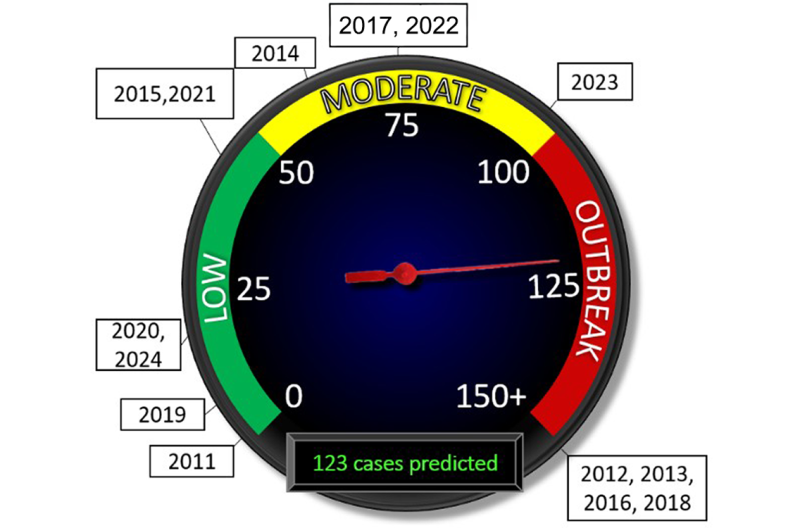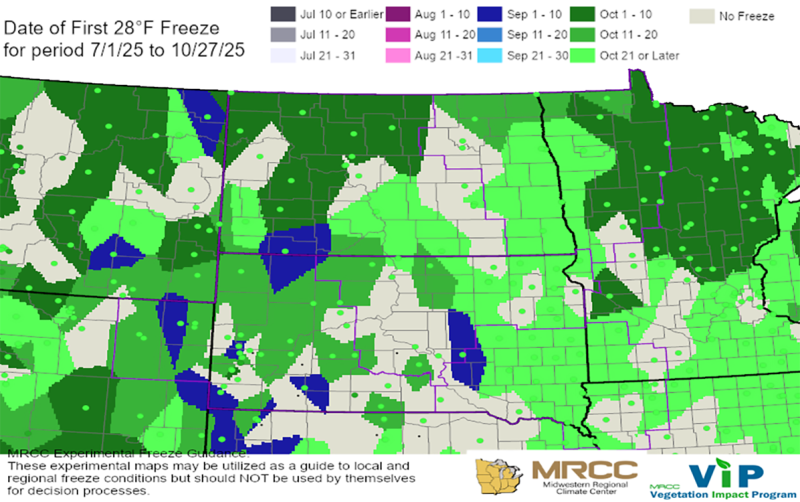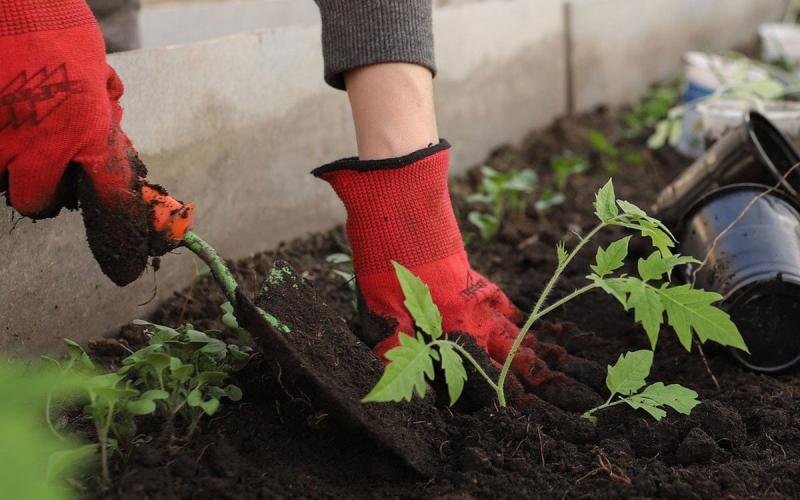
Written collaboratively by Adam Varenhorst, Amanda Bachmann, Stephen Robertson, Philip Rozeboom, Patrick Wagner, and Bradley McManus.
As of October 16, 2025, the South Dakota Department of Health (SD DOH) indicated that West Nile Virus positive mosquito pools have been detected in Beadle, Brookings, Brown, Codington, Hughes, Lincoln, and Minnehaha counties in South Dakota. So far, there have been 86 reported human cases of West Nile virus from Aurora, Beadle, Bon Homme, Brookings, Brown, Charles Mix, Clay, Codington, Corson, Douglas, Grant, Gregory, Haakon, Hamlin, Hand, Hughes, Hutchison, Hyde, Lawrence, Lincoln, Marshall, Meade, Miner, Minnehaha, Pennington, Roberts, Sanborn, Spink, Stanley, Todd, Union, Walworth, and Yankton counties.
The human cases in South Dakota are considered at a moderate level, and the last update to the SD DOH prediction model was estimating 123 cases for 2025 (Figure 1).
Case numbers have not increased much in the last few weeks, likely due to cooler temperatures and the occurrence of the first hard frost occurring in many areas of the state (Figure 2).

However, there are some parts of South Dakota that have still not experienced a freeze below 28 ℉. Mosquitoes will remain a threat until at least one or two hard frosts have occurred. Preventative actions to avoid bites should be continued until that time.
There are two mosquito species that account for most of the human bites and the risk associated with contracting the West Nile virus. Another previous article discusses practices that can reduce mosquito bites.
If you are outside after dark, make sure to cover as much of your skin as possible by wearing long sleeves and pants. We also recommend using insect repellants that contain DEET or similar active ingredients to provide further protection.
The U.S. Environmental Protection Agency provides a helpful tool for choosing a repellant that will provide the best protection based on the desired activities.


